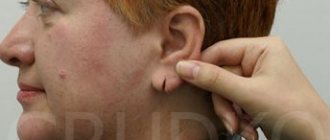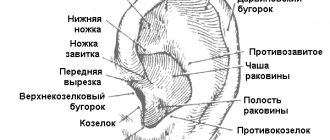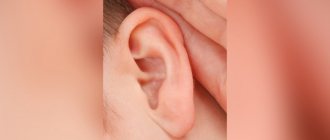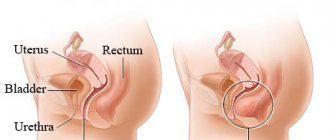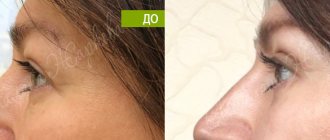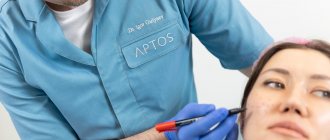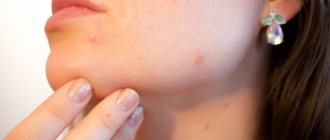Classification of ear deformities
Auricular deformation is a congenital or acquired pathological change in the cartilage of the auricle. In most cases, congenital disorders are accompanied by hearing anomalies, up to its complete absence, these include:
- deformation of the helix - protrusion, sharpening of the ear, smoothing of the helix;
- underdevelopment - ears are flattened and small in size;
- rolled/folding ears;
- protruding ears - the angle between the ear and head is too large, up to 90 °;
- macrotia - overgrown ear;
- deformation of the earlobes - their twisting, bifurcation, fusion with the head.
Before the intervention, the ears are photographed in different projections and measurements are taken. They are needed to create symmetry during surgery.
Bely Igor Anatolyevich plastic surgeon, Doctor of Medical Sciences
Acquired deformities (after injury or inflammation, burns or frostbite):
- keloid scar - excessive growth of connective tissue structures;
- thickening of cartilage;
- tumor;
- missing part of the ear.
Indications and contraindications for otoplasty
Otoplasty is a plastic surgery, thanks to which the doctor can model the desired, anatomically correct shape of the ears for defects of various directions. The main indications for surgical correction of the ears are:
- the need to form a natural-looking antihelix of the auricle;
- asymmetrical and non-standard ear shape;
- protruding ears;
- deformations of cartilage tissue that can only be eliminated surgically;
- absence of the auricle (aplasia);
- aplasia of the ears caused by trauma, accident, accident;
- damage to the auricle caused by burns from acid, fire, explosives;
- disproportionate size of the ears in relation to the face;
- bifurcation, inversion of the lobe or wrinkling of soft tissues.
Otoplasty allows you to make the ears beautiful, aesthetically attractive and ideal.
Preparation period
Before the operation begins, there will be a meeting with the surgeon to exclude contraindications, select a method of operation, and discuss the patient’s wishes. The doctor models the result of plastic surgery on a computer so that the patient has a complete understanding of it.
As part of the preparation, the following studies are required:
- blood and urine tests;
- blood biochemistry (electrolyte levels, Rh factor and group, syphilis, HIV, hepatitis, coagulation);
- fluorography;
- ECG
Before otoplasty it is recommended:
- do not smoke - smoking reduces blood flow to the skin and can slow down the healing process;
- do not take medications - aspirin, non-steroids, which increase bleeding;
- have an accompanying person with you.
Ear plastic surgery: prices in Moscow
How much does ear plastic surgery cost? The cost of surgical correction of the ears is calculated individually for each patient by a plastic surgeon after examining the ears. Average prices for otoplasty depend on the technique of aesthetic surgery:
- traditional ear otoplasty – from 50 to 75 thousand rubles;
- laser otoplasty – from 60 to 80 thousand rubles;
- earlobe correction – from 30 to 40 thousand rubles;
- reconstruction of the auricle – from 200 thousand rubles.
The cost of otoplasty is quite low, so aesthetic and reconstructive surgery has become available to all patients who have flaws in appearance.
Types of otoplasty
Today there are more than 200 methods and they are conditionally divided into 2 large groups: reconstructive and aesthetic methods. There are also two main methods of surgery: classic (using a scalpel) and laser. The choice of method depends on the doctor and the patient’s ability to pay (laser is more expensive).
Surgical intervention after injury is possible after 1–1.5 years. For congenital deformities, surgery is performed at 5–6 years of age (earlier correction may cause relapses as the ear continues to grow).
For children, general anesthesia is used; for adults, local anesthesia is usually used.
At what age can you have ear surgery?
Today, the optimal period for aesthetic otoplasty is considered to be childhood - 6-7 years. This is due to the fact that at this time the child is not yet attending school, which means he will not suffer psychologically from children’s ridicule about his protruding ears, aesthetic defects in the auricles, and earlobes. It is not recommended to perform laser otoplasty in children under 6 years of age, which is due to the final formation of the shape of the auricle by this age. But at the same time, a plastic surgeon can perform surgical correction in young patients, if there are indications for this.
If you or your child needs otoplasty, study the prices and reviews of plastic surgery on our website. Photos of patients after surgical correction of the ears are real and published with the permission of the clients.
How is otoplasty performed?
The operation begins with local anesthesia in the back and front surfaces of the ear (anesthesia in childhood). After anesthesia, the surgeon makes an incision behind the ear, eliminates excess cartilage tissue and corrects the shape of the ear cartilage. The duration of the operation is about 60 minutes. After all the manipulations, the doctor applies stitches. Patients may experience slight discomfort during surgery.
Methods of aesthetic otoplasty
Furnas method - the posterior portion of the skin is excised. The cartilage is sutured to the temporal bone, thereby pressing the ear to the head.
The Mustard method - an incision is made in the back of the ear, the cartilage is thinned and sutures are placed on top of it. They force the cartilage to bend and create the desired shape of the ear.
Etenstrom's method - an incision is made behind the ear, sutures are placed through it, forming a new position of the ear. Cartilage tissue from the patient's rib is used to reconstruct the injured ear.
Laser otoplasty
The scalpel replaces the laser beam. Local anesthesia. The duration of the manipulation is about half an hour. Laser plastic surgery is non-traumatic and practically bloodless. The laser beam itself has an antimicrobial effect on the skin, preventing infection and promoting rapid healing.
Laser advantages:
- high beam accuracy;
- smooth cut lines;
- minimal risk of complications;
- shortening the rehabilitation period;
- absence of scars and cicatrices;
- no need for bandaging
The only negative is the high price
Benefits of laser otoplasty
If we talk about traditional and laser otoplasty, the advantages of laser ear surgery are undeniable:
- high precision of beam exposure to cartilage and soft tissues, thanks to which the doctor can achieve smooth lines;
- under the influence of a laser beam, cartilage becomes more plastic, which facilitates the correction process;
- small vessels that are damaged during otoplasty are immediately cauterized with a laser beam, which prevents bleeding;
- the risks of wound infection during otoplasty are minimal, since the laser has a bactericidal effect;
- the duration of laser correction of the auricle is reduced by 20–30 minutes;
- the rehabilitation period passes more easily and unnoticed by the patient.
It should be remembered that otoplasty using laser equipment is more expensive than the traditional method of ear surgery. To achieve optimal results from ear plastic surgery, each plastic surgeon selects the surgical technique for the patient during an in-person consultation. It is impossible to resolve such an issue in absentia.
Rehabilitation period
Swelling after otoplasty almost always occurs. Immediately after the operation, a cotton swab soaked in an antiseptic is inserted into the ear. The ears are secured with a multi-layer bandage. The tampon is changed every 2-3 days, the bandage is worn for a week. For pain, it is recommended to take analgesics. After discharge, the patient must sleep only in a bandage for another month to protect the surgical site from any injury.
You should not wash your hair for 2 weeks after surgery to prevent water from getting into the wound. The complete recovery period takes 2–6 months (depending on the complexity of the operation).
Sutures are removed after 7–10 days. If self-absorbable thread was used, this will not be necessary. After laser plastic surgery, the sutures are removed earlier.
In the first few weeks after surgery, it is recommended to protect yourself from hypothermia and not engage in extreme sports (wrestling, diving, etc.) for a month.
Laser otoplasty - progress of the operation
The laser method is a more expensive way to correct the shape of the ears. The operation lasts only 30 minutes and is performed under local anesthesia. There is practically no pain, which is why laser otoplasty is popular among children. All cuts are made using a laser scalpel, and, therefore, there is much less blood than with the traditional method. The rehabilitation period is also much shorter.
Rehabilitation after laser otoplasty takes place in a short time. You can evaluate the final result of protruding ear correction within a week. Incisions made with a laser scalpel heal very quickly. To eliminate pain in the first days, you should take analgesics.
In order to reduce the risk of any complications, it is necessary to strictly adhere to all doctor’s recommendations after surgical correction of the ears. In particular, you should wear a special multi-layer bandage that will protect your ears from mechanical stress and adverse factors.
Duration
It takes 1-2 weeks to prepare in order to have time to decipher the results of all the tests performed and finally make sure that the patient’s health is normal.
The operation time is approximately 1 hour. After otoplasty, I usually ask the patient to remain in the hospital for 1 day. Full recovery takes about 5-6 months.
Progress of the operation
Anesthesia. For children and adolescents, general intravenous anesthesia is most often used; for adult patients, local anesthesia with intravenous analgesics and sedatives is used.
Methods. To open access to the cartilage of the auricle, a small incision is made on the back side and the skin is separated from the perichondrium. The location of the cartilage can also be changed through the use of sutures. Another example of a well-known otoplasty method is the excision of tissue in the postauricular area, bending the cartilage in the posterior direction and fixing it in a new place with sutures.
Rehabilitation
Recovery after ear surgery takes about 5-6 months. At first, the patient wears special bandages in a special sequence:
- the first week after surgery - a gauze bandage;
- the second and third weeks - a bandage based on an elastic bandage.
The stitches will be removed after about two weeks, after which you will need to temporarily wear an elastic band.
I recommend monitoring the nutrition system during the rehabilitation period, excluding “heavy” fried foods, spicy, pickled, smoked and spicy dishes for a while. You should also spend as little time under the sun as possible; you should not sunbathe, visit the solarium, sauna, or swimming pool.
Possible complications after otoplasty
Possible complications that may occur after ear surgery:
- pain in the operated area;
- formation of hematomas;
- inflammation;
- maceration of the epithelium;
- scarring.
All of these complications are extremely rare and, as a rule, can be easily eliminated with modern methods of therapy and cosmetology. In my practice, there have been no such cases. All postoperative swelling and hematomas usually go away on their own and do not require additional interventions, as they are quite normal after ear surgery.
Is it difficult to recover after ear correction?
Painkillers will help you cope with discomfort after otoplasty. The doctor may also prescribe medications to help relieve swelling.
After 8-10 days, the external cosmetic sutures are removed, the internal ones will dissolve on their own. After 3-4 days you are allowed to wash your hair. You can return to work after 2 weeks. For the next 4 weeks, it is recommended to wear a fixative bandage at night. Wearing glasses should be postponed until the end of the recovery period.
How can I help myself during the rehabilitation period?
- Do not remove the fixing bandage yourself during the first postoperative week;
- avoid strenuous physical activity, high-risk contact sports;
- sleep on your back with your head raised;
- exclude spicy, salty, smoked and fatty foods, as well as alcohol and nicotine from your diet;
- refrain from visiting the sauna, bathhouse, swimming pool, solarium;
- do not take a hot bath;
- Avoid direct sunlight.
How much does otoplasty cost?
The Institute of Plastic Surgery on Trubnaya offers you the most favorable prices for ear correction in Moscow - from 34,900 rubles, depending on the complexity of the intervention. The price includes consultations with a specialist before and after otoplasty, tests, anesthesia, and dressings.
All clinic services are available on an interest-free installment plan: get ear surgery today and pay for it over the next 24 months. No overpayments!
Attention! All aesthetic plastic surgeries and most cosmetic procedures are strictly contraindicated for pregnant and lactating women. We also do not perform surgical interventions on people whose weight exceeds 110 kg.


